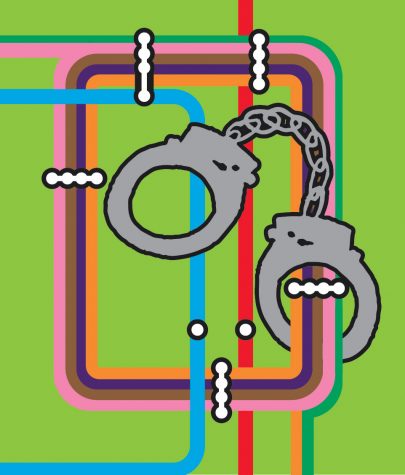EDITORIAL: Young people need spaces and understanding, not policing
April 26, 2019
Since about 30 teenagers were arrested in the South Loop the night of April 17, police reports and eye-witness accounts have been mixed. The Chicago Tribune reported that about 500 teens were traveling through the city. NBC reported that around 200 police officers, both on foot and on bikes, responded to the teenagers. Most of those arrested were charged with disorderly conduct and released to their parents, but a handful were charged with “disorderly mob action, resisting arrest and battery” after fights broke out at the scene, according to the Tribune article. A similar event occurred again April 22, resulting in 12 arrests, according to CBS.
In both cases, the majority of the teens involved appeared to be black, increasing the importance of paying attention to this situation. The Chicago Police Department’s relationship with black youth has been tense at best, brutal at worst.

Onlookers to these events may wonder why so many teens were wandering the streets, and that question comes with a complicated answer. According to an April 22 CBS report, teenagers sometimes organize large group distractions to allow crimes, especially burglaries, to take place unnoticed. This is especially possible in retail-heavy areas of the city such as the Magnificent Mile. It is impossible to know beyond doubt what motivated particular teens in particular incidents, but we still have to find solutions amid the uncertainty.
CPD is reportedly taking a zero-tolerance approach to what they describe as unruly teen behavior and wants the arrests to serve as a warning to other teens, according to NBC. It remains unclear what such a policy would actually look like when implemented, and the CPD needs to address that concern with honesty and integrity.
Distractions and crimes committed by teenagers are symptomatic of larger social issues that need to be addressed by our city and community. Underserved neighborhoods which lack community resources and safe places to hang out offer very few options for how to spend the first warm nights of the year. It was Spring Break, and there is more to do downtown than anywhere else. Teens have just as much of a right to wander Millennium Park as anyone else, if they can do so safely.
These reports have raised more questions than they have answered. Chicago is embroiled in police conflicts, constantly seeking solutions for brutality and heavy policing. Seeing so many officers responding to a group of high school students raises eyebrows and concern, even if those high school students may not have had the best intentions. CPD must develop a way to respond to unarmed youth in a way that is non-threatening and affirming of the students’ rights. They must find a way to keep traffic moving and maintain peace downtown, but they must not perpetuate systemic over-policing, judgment and violence against Chicago’s black community.
We need to invest in our teenagers instead of policing them. When high school students have access to resources that are engaging, exciting and accessible, they are able to thrive and to make productive, crime-free choices. To automatically assume a group of teenagers is threatening is to disempower and disenfranchise them. When young people learn through the actions of the police and the public that they are not supposed to inhabit their own city, they internalize the message that they are a burden, a threat and a nuisance.
The teenagers we are arresting now are going to come of age in the next few years. If we truly want to avoid further arrests and increased police tensions, then we need to empower them and show them that they are a valuable part of our society. We need to invest in their schools and communities. Most of all, we need to mindfully and intentionally create spaces for them instead of forcing them out of what little space they already have.







